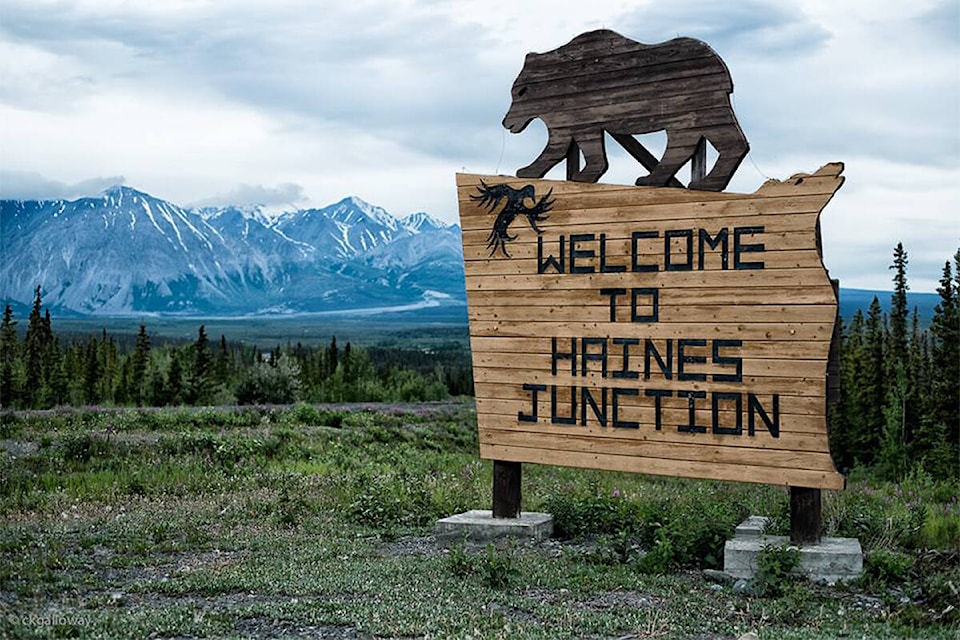The village of Haines Junction is getting a new subdivision, but Jeannine St Marie wants to know who it’s for.
“The people in Haines Junction that need homes cannot afford to buy what the government is putting out so it’s not for Haines Junction people,” said St Marie on March 14, a day after the Yukon government announced work was beginning March 13 to build 44 lots on a parcel of land in the community. The lots are expected to be completed by July 2025. “That’s what I see from my tax bracket. Those aren’t for me.”
Brian Crist is the manager of planning, implementation and projects for the land development branch of the Yukon government. He said the Yukon Bureau of Statistics shows that the population of the community was anticipated to rise by 600 residents between 2022 and 2040.
Crist said that would translate to a need of roughly 334 new dwelling units, and that this subdivision aims to meet that need.
“It will create that much more opportunity in Haines Junction,” he said.
St Marie disagrees. The mother of three has lived in the community for 18 years. In the beginning, renting wasn’t a problem. However, after separating from her partner in 2019, scarcity of rentals and the purchase price of homes left her close to homelessness.
St Marie and her three kids (the youngest is currently eight) moved four times in 18 months because the only rentals they could find were houses that were sitting on the market. Each time, the house eventually sold and St Marie had to move her family again.
“It was very traumatic, I don’t even know how else to put it,” she said.
St Marie has since found accommodation through Yukon Housing, where she’s been for almost three years, but said she’s still in the hole for the costs incurred by paying first and last month’s rent, oil and damage deposits over and over again. Her youngest still uses the phrase “when we move again” because he’s so used to it, she said.
St Marie, who works in wellness with the Champagne Aishihik First Nation, said she’d love to be saving money for a home of her own, but she’s not in a position to do that when she has to buy groceries at the Dollarama.
She thinks there’s a disconnect between what the community needs and what the government is offering with its new subdivision.
Crist said that subdivision was identified in cooperation with village residents.
“The village of Haines Junction has developed its own official community plan,” Crist told the News. “That is a process they work through and look at all their areas of current use and future land use, and they designated this particular area for serviced residential development.”
Crist said the village arrived at that decision with the help of feedback from residents, gathered through an open house and online survey in 2022. Fourteen residents attended the open house and 42 filled out the online surveys.
Crist said feedback pointed to four priorities.
One was to preserve the natural environment.
“Thirty-four per cent of the planning area is green space which is a high amount for serviced residential,” said Crist.
Another priority was to include a trail system with links to surrounding green space and the downtown.
Because of this, there will be a park in the new subdivision, as well as a kilometre of walking trails that connect to other nearby trails and the core of the village.
Residents also wanted to see a variety of lot sizes. Crist said lots will range from 292 metres for lots that can handle a smaller duplex, to 650 metres for lots that can accommodate a larger single-detached home.
The final priority was that the lots be affordable.
Crist said there are no price estimates in place for the lots at the moment, but that a $7.8-million tender was awarded to Castle Rock Enterprises.
“[Price] will be established by looking at the actual costs of the development,” he said. “The goal is for the Yukon government to recover all the costs of design and construction.”
St Marie said she doesn’t see how that can translate to affordable lots.
“It’s elitist,” she said. “Like great, go help out the people that are making $130,000 a year. Meanwhile the only thing I’ve ever wanted was to own a home so my kids could have roots […] it is really hard for me to keep my head up and keep truckin’ along and know that, at 43 years old, I’m never going to get that.”
What she would like to see in the community are townhouses and apartment complexes, or supportive housing units with low, stabilized rent for a five-year period so residents can afford to save up for homes of their own.
Government can clear as much land for development as it wants, she said, but if it’s not affordable, what’s the point?
Contact Amy Kenny at amy.kenny@yukon-news.com
